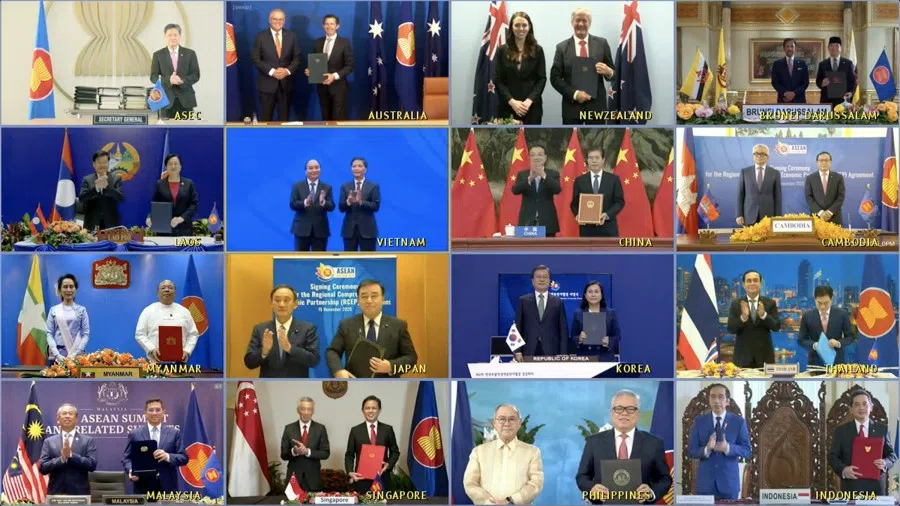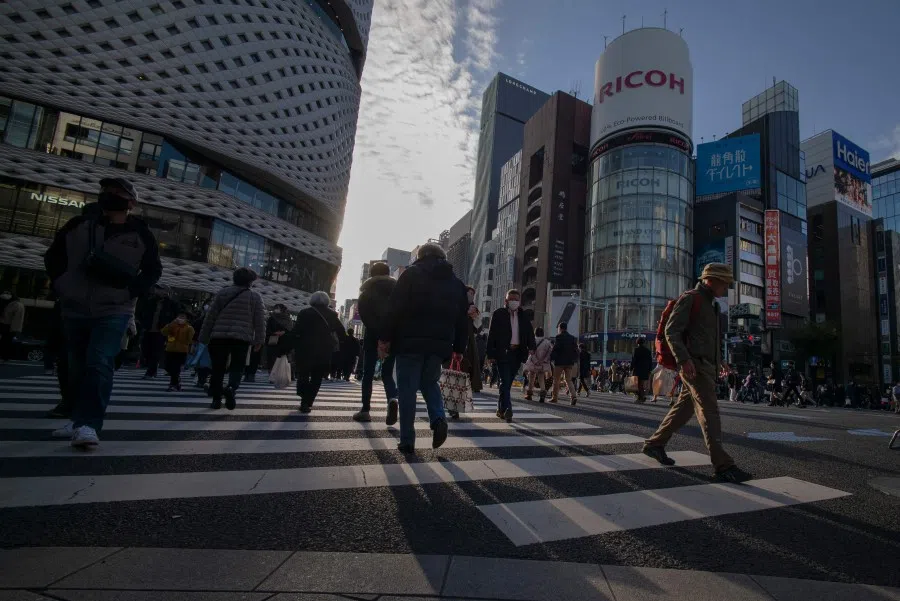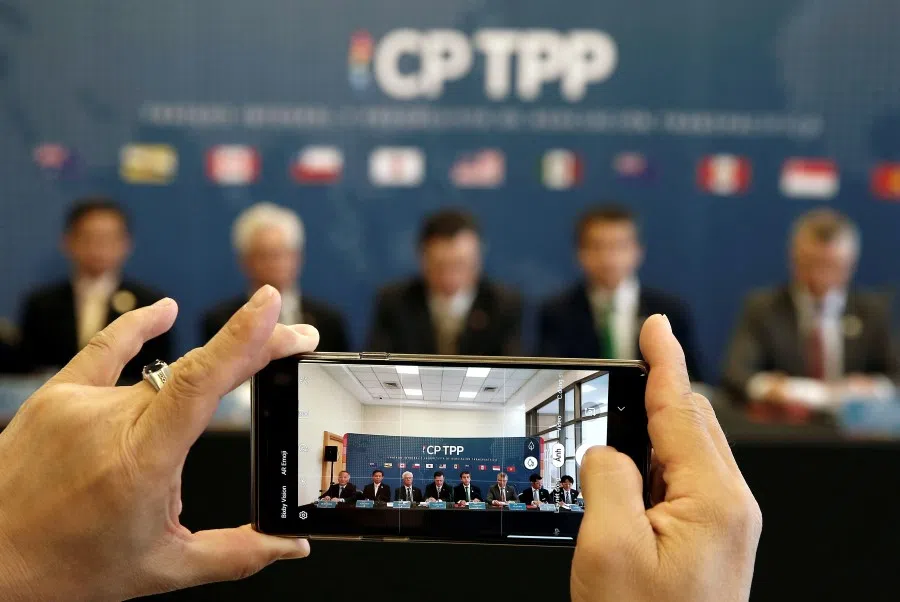China has entered the 'gilded cage' of RCEP and is considering the CPTPP. What's next?
With the recent signing of the RCEP and China's comment that it will "favourably consider" joining the CPTPP, are prospects looking up for greater domestic reform and regional economic integration across the board, and will dreams of a free trade area of the Asia-Pacific have a higher chance of eventually taking shape? Japan-based academic Zhang Yun looks at the potential outlook.

History is intriguing. Sometimes change happens slowly; at other times it is rapid. There have been two breakthroughs in Asia-Pacific economic cooperation agreements in November this year.
On 15 November, ASEAN together with China, Japan, Korea, Australia, and Singapore signed the Regional Comprehensive Economic Partnership (RCEP) after eight years. And on 20 November, at the Asia-Pacific Economic Cooperation (APEC) leaders summit, Chinese President Xi Jinping said that China would "favourably consider" joining the Comprehensive and Progressive Agreement for Trans-Pacific Partnership (CPTPP). Coming from China's top leader, it is a very significant statement.
Over the past decade or so, there have been conflicts of opinion on the RCEP and the Trans-Pacific Partnership (TPP), both within and outside of China. Some international analysts feel the RCEP is a tool for China to lead the Asian economic order, while some experts in China feel the TPP is a lever for Japan and the US to contain China's rise.
These two breakthroughs in November can be said to be a strong clapback to the views above. But as the debate continues, it is necessary at this juncture to take a macro view and look at how the agreements are related, from the perspective of the future Asia- Pacific economic order.

China integrating into Asian economy
First, the RCEP is an economic arrangement that takes into consideration the diverse levels of development in this region, to pragmatically push for an integrated Asian economy. Like China's traditional economic growth model, Asia's economic development is characterised by the absence of both resources and markets within the region, and a low interdependence between regional economies. The fragility of such an externally dependent economic growth model was exposed during the Asian financial crisis of 1997 to 1998, and the Wall Street financial crisis of 2008 to 2009.
The most notable result of RCEP is the standardisation of the rules of origin of traded goods within the free trade zone, which would help build up a flexible regional supply chain. Greater collaboration and division of labour between supply chains means China's economy will be further tied into the regional economic order. This will be a stabilising factor for the regional economies.
Second, as the top three regional economies, China, Japan, and Korea have not made progress in bilateral or trilateral free trade negotiations due to various factors. Through RCEP, China, Japan, and Korea have indirectly achieved a partial free trade agreement (FTA). China and Japan are the second and third largest economies in the world, while Korea is tenth. All three are members of the G20, with highly complementary economies and strong interdependence, and the outlook is positive for an integrated economy.
For China, although joining RCEP would make an impact on some of its industries, it pressed on with the grouping. This presents a strong contrast to India's rejection of the group. It shows China's aspiration in developing resilient trilateral relations with Japan and Korea through economic integration.
... the RCEP is like a gilded cage - a regional economic framework that China has willingly entered, to put the region at ease to achieve shared progress.

Just as regional economic arrangements such as the European Coal and Steel Community and the European Economic Community led to long term stability and prosperity in Europe after WWII, China, Japan, and Korea have to deepen economic integration as well as integration of interests in order to foster regional identity.
Third, the RCEP is an open regional economic arrangement and not a xenophobic one. The RCEP documents specifically welcome India to join in at any time. Traditionally, after an international economic arrangement is signed, there is a restriction of some years before new members are allowed. Such special terms for India demonstrate Asia's tradition of open regionalism.
Hence, the RCEP is like a gilded cage - a regional economic framework that China has willingly entered, to put the region at ease to achieve shared progress.
Tough regional requirements for CPTPP
First, the TPP - the predecessor of the CPTPP - was proposed by smaller economies like Singapore and Brunei. Subsequently, Japan joined in, and the Obama administration also gradually came in. The TPP did not originate from big powers such as Japan and the US. One of its main aims was to allow the US to play a more active role in the Asian economic order in this new era. The signing of the TPP meant the first time that the US signed a legally binding document with East Asia, a milestone in the US's East Asia strategy.
... the motivation for the TPP originated from countries wanting to use "external pressure" to drive domestic reform.
Historically, US relations with Asia have been highly dependent on bilateral relations and agreements; there has not been a general US-East Asia framework. In this sense, the TPP as proposed by several small countries was to provide more multilateralism in US-East Asia relations, showing the wisdom of small countries.
Second, the motivation for the TPP originated from countries wanting to use "external pressure" to drive domestic reform. For the US, the WTO Doha talks have seen no progress over 15 years; some bilateral FTA talks began in 2011, such as signing FTAs with Korea and Colombia. However, strong political resistance within the US has made it extremely difficult to sign FTAs with larger economies. Subsequently, the US started a new chapter in its external economic strategy, of TPP-based multilateral economic negotiations with the Asia-Pacific region.
The initiation of the TPP coincided with the Obama administration's "rebalance to Asia" concept, hence China interpreted it as a means of containing it; however, it was in fact countries wanting to use external forces to drive domestic reform. It was a similar situation in Japan - after the 1990s, its economic reforms lagged, leading to 20 years of low growth, with hard-to-break vested interest structures.

Then TPP talks galvanised domestic reform
Japanese Prime Minister Yoshihiko Noda's decision to join the TPP talks was made during the Democratic Party's reign in government, as was the increase in consumption tax. These decisions were inherited by Shinzo Abe and the Liberal Democratic Party during their term, meaning there was cross-party consensus in Japan on the TPP.
Leveraging the TPP, the Abe government embarked on reforming the Japan Agricultural Cooperatives (JA) group and reducing corporate tax, and did what Japanese prime ministers over the past two decades wanted to do but failed to. This is like China negotiating to enter the WTO to drive domestic reform - there is no fundamental difference in intention.
The thinking was that If the TPP could encourage Japan's economy to be more open and vibrant, it could also push Japan's domestic political environment to move in the same direction, which would boost Japan's confidence and drive to participate in diplomacy. Japan's economic recovery would also benefit China. Malaysia and Vietnam had the same hope that the TPP would encourage domestic reform.
A "China solution" is no longer just an empty slogan, but a real need and a global call.
Third, China's latest round of reform and opening up calls for joining the CPTPP. China's rise has greatly changed the balance of economic power in Asia. China accounts for 15% of global GDP, with the world's highest volume in trade. A "China solution" is no longer just an empty slogan, but a real need and a global call. At the same time, one should see that compared to the US after WWII, China is big but not dominant in building the Asia-Pacific economic framework - the economies of the US and Japan combined are still significantly larger than China's. Figures from the International Monetary Fund (IMF) show that China accounted for 12% of global imports in 2015, while developed Asia-Pacific economies like Japan, the US, and South Korea accounted for about 37%; also, compared to these developed economies, China is not a main global importer of finished consumer goods.
As an economic cooperation agreement in the knowledge economy, apart from tax reductions and exemptions, the CPTPP also touches on a lot of new items such as intellectual property protection and regulations on data flows, representing new rules for the knowledge economy. On the other hand, the RCEP is more about reducing traditional international trade barriers. Hence, the CPTPP can act as an important external force to create fresh impetus for domestic reform in China's latest round of reform and opening up, and have a similar effect that China's membership of the WTO had.

Leadership and the future of the Asian economic order
East Asian economies' signing of RCEP and China saying it is "favourably considering" joining the CPTPP have sparked international discussion on leadership of the economic order in East Asia shifting to China. I feel that interpretations of a leadership tussle will gain attention, but leadership is not wholly the result of tussling; to some extent, it is also a natural process and transition.
The US's current leadership in the Asia-Pacific and global economies was formed over time, and not totally the result of a grand strategy. After WWII, the US's overwhelming economic, technological, military, and cultural power, coupled with the inability of major countries to take on the job of rebuilding the global order, led to the necessity of US leadership, which in turn resulted in the US's belief that it is exceptional.
This would eventually lead to Asia-Pacific integration, and the mutual suspicion between China and the US may see a systemic improvement, making the two groupings one possible route to creating a Free Trade Area of the Asia Pacific (FTAAP), covering all the economies in the Asia-Pacific economic cooperation groupings.
While FTAs and frameworks seem to have mushroomed in the region, they will have to be tested by the market in terms of economic vibrance and sustainability. A successful CPTPP, RCEP, or the ASEAN Economic Community (AEC), does not depend on governmental decisions or media commentaries, but on the economic activities of the businesses and companies.
For companies, having more options is not a bad thing. They will seek the most advantageous regional framework that works the best in resource allocation and optimisation of interests, and distribute the flow of goods, people, and funds accordingly.
Hence, in the restructuring of the Asia-Pacific economic order, the various mechanisms will compete and work to increase their value, while seeking opportunities to cooperate and integrate with one another. This will be a very fluid process, and strategic flexibility is required in order not to miss out on opportunities.
Quite a few of the current CPTPP and RCEP members overlap, which means these two groupings are not mutually exclusive, but coexist in cooperation and competition. It is likely that they will achieve the same goal but in different ways, and merge at some point. This would eventually lead to Asia-Pacific integration, and the mutual suspicion between China and the US may see a systemic improvement, making the two groupings one possible route to creating a Free Trade Area of the Asia Pacific (FTAAP), covering all the economies in the Asia-Pacific economic cooperation groupings.
Related: The overstatement of the RCEP | Hostile ties with China make it impossible for India to return to RCEP | Why China is rejoicing over the RCEP | RCEP: The start of a new 'China-centric' order? | RCEP affirms ASEAN's irreplaceable East Asian centrality | China's true intentions in wanting to join the CPTPP





![[Big read] China’s 10 trillion RMB debt clean-up falls short](https://cassette.sphdigital.com.sg/image/thinkchina/d08cfc72b13782693c25f2fcbf886fa7673723efca260881e7086211b082e66c)